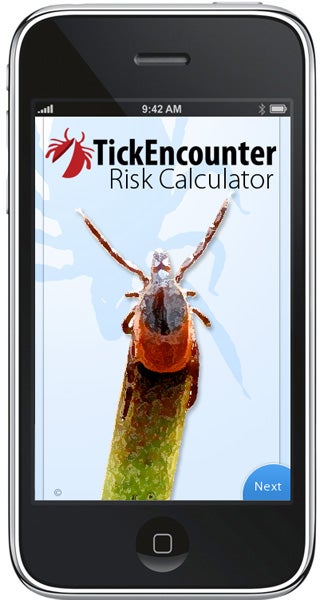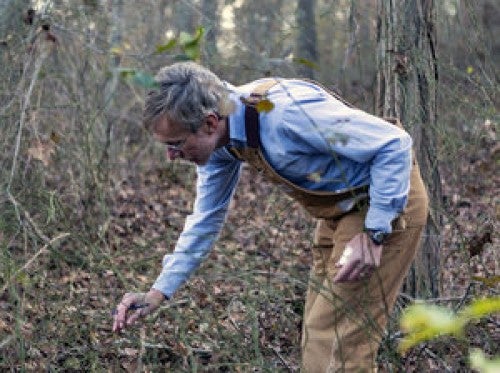Although winter is fast approaching, disease-carrying deer ticks are still active and abundant in southern New England, where a University of Rhode Island researcher has been collecting adult deer ticks at a rate of more than 350 per hour while walking in the woods, along parkland paths, and even on local roadsides in recent weeks.
“It’s further evidence that the old rules about when and where ticks are active and how to avoid ticks don’t apply,” said Thomas Mather, URI professor of entomology and director of the Center for Vector-Borne Disease. “We are definitely seeing a continuing trend of finding more ticks in more places. That means that people are having more tick encounters than ever before, so more than ever they need to take precautionary measures.”
Mather has just been awarded an $875,000 grant from the Centers for Disease Control to conduct studies and develop tools that will help residents choose the best tick control strategies for their needs. Part of the funding will be used to establish a series of test plots at the University’s East Farm that can be used to assess the effectiveness of various tick control products in a controlled setting but under natural conditions.
“Currently, there is no efficient system for assessing how effective existing or new tick control products are under field conditions,” Mather said. “What’s needed is a highly replicated testing ground where we can control for some of the variables but very rapidly collect efficacy data on a number of products all at once.”
He said that numerous tick control products are in development for yard use, including natural products; one containing a rosemary oil formulation, another containing a fungus, and others that are used to control lawn and garden pests. All of these products in the tick control pipeline could be easily evaluated in the new test plots.
“Our system should greatly accelerate the pipeline of product assessment and provide useful data for homeowners,” Mather added.
The CDC grant will also enable Mather to collaborate with tick control customers of The Bartlett Tree Experts and Ocean State Tick Control to compare the effectiveness of standard tick control treatments. The URI team also hopes to evaluate combinations of strategies to determine whether an integrated tick control plan “provides more bang for the buck.”
 In addition to product testing, the grant will fund development of what Mather calls a “decision support tool” to help homeowners decide which product is most appropriate for their circumstances. His team is developing a TickEncounter Risk Calculator as a smart-phone application to enable landscapers and homeowners to more easily assess a property’s risk level based on factors like tick habitat, pets, geography, distance from a forest, and human activity. After calculating one’s risk, the application will provide users with a customized action plan for how best to reduce the risk of encountering deer ticks.
In addition to product testing, the grant will fund development of what Mather calls a “decision support tool” to help homeowners decide which product is most appropriate for their circumstances. His team is developing a TickEncounter Risk Calculator as a smart-phone application to enable landscapers and homeowners to more easily assess a property’s risk level based on factors like tick habitat, pets, geography, distance from a forest, and human activity. After calculating one’s risk, the application will provide users with a customized action plan for how best to reduce the risk of encountering deer ticks.
“We need to give people options and help them make decisions so they can take action to protect themselves and their families,” Mather said. “If we can increase the number of yards effectively treated for ticks by even 20 percent, I’m sure we’ll see a reduction in disease incidence in the area.”
U.S. Senator Jack Reed agrees.
“Lyme disease is a growing threat, and Professor Mather and the URI Center for Vector-Borne Disease have played a leading role in tick-borne disease prevention, research, and education efforts,” said Reed, a co-author of the Lyme and Tick-Borne Disease Prevention, Education and Research Act of 2011 and a member of the Appropriations Committee, who, in the past has secured over $1.3 million in targeted federal funds to help support the Center for Vector-Borne Disease’s efforts. “I congratulate Professor Mather and his team on this award. This CDC grant will enable URI researchers to test tick-control products to ensure they are safe and effective.”
For seasonally relevant information on tick-safe living, Mather recommends visiting www.tickencounter.org on a regular basis.

